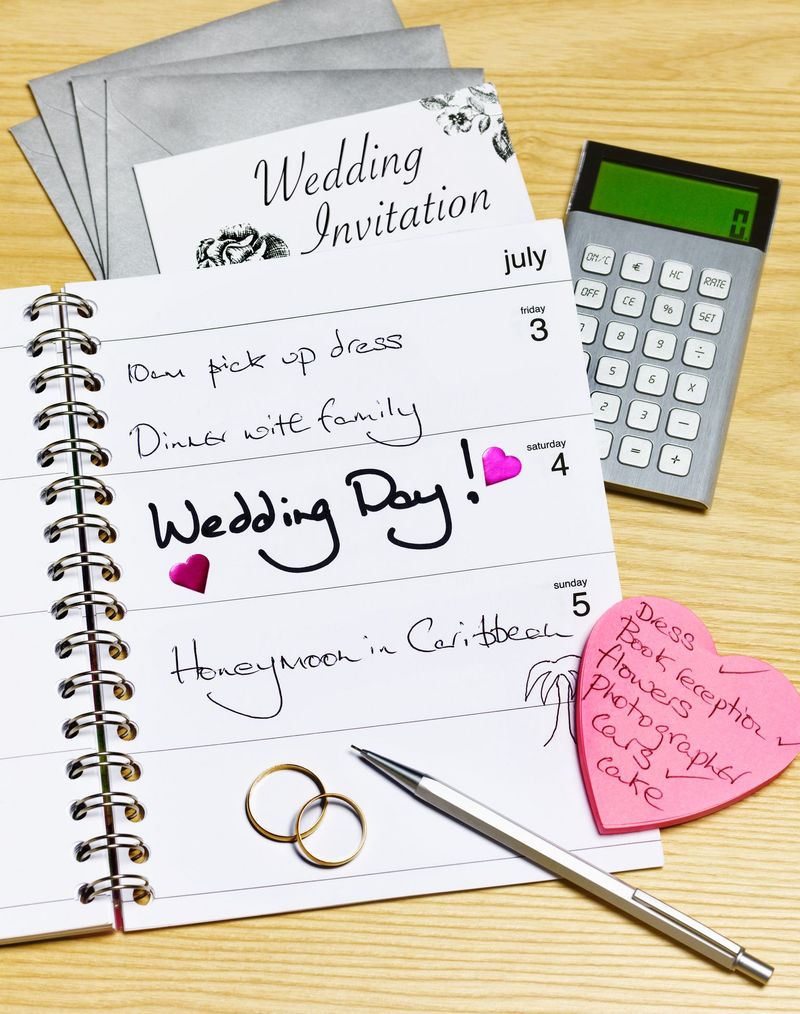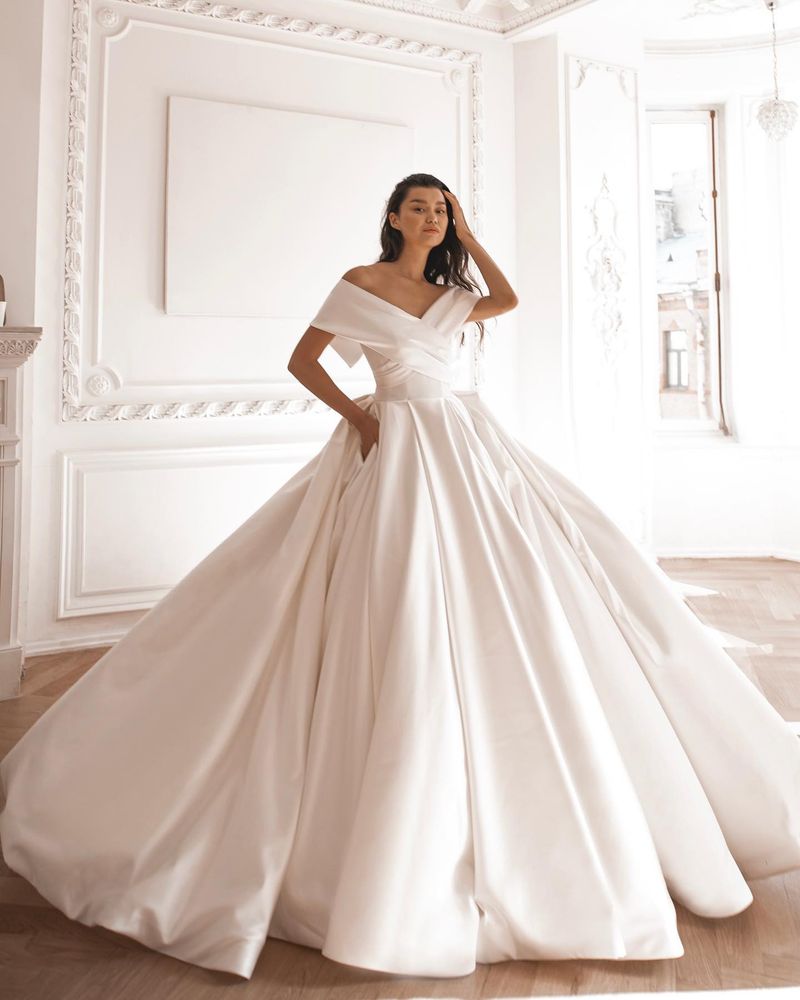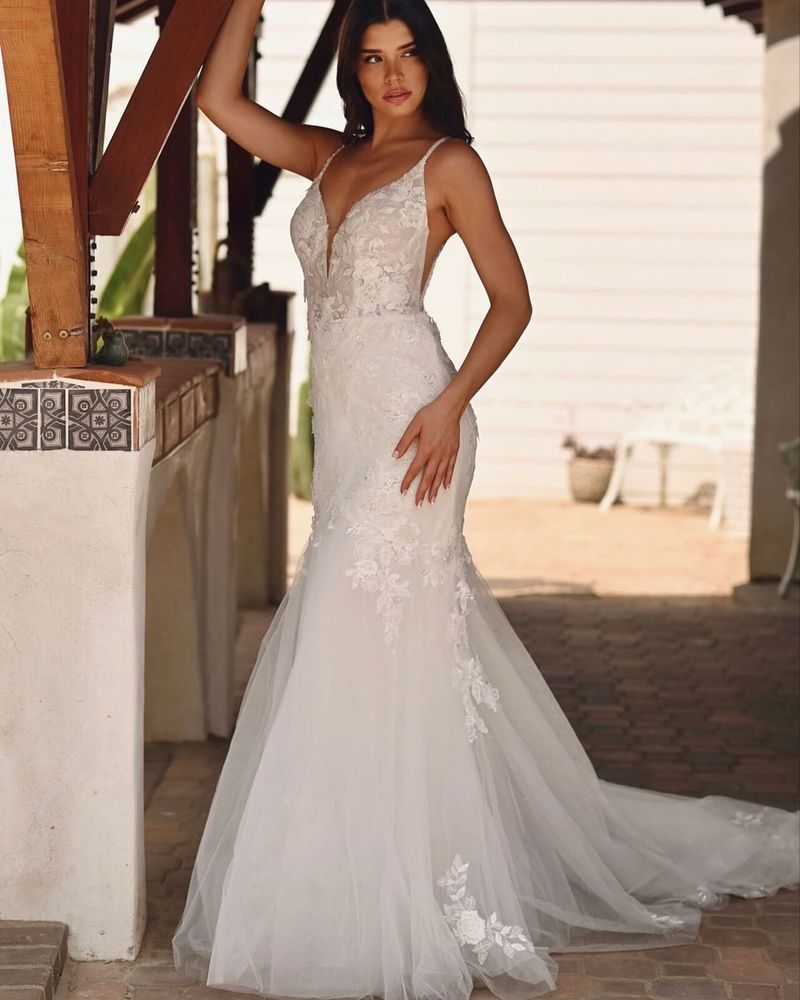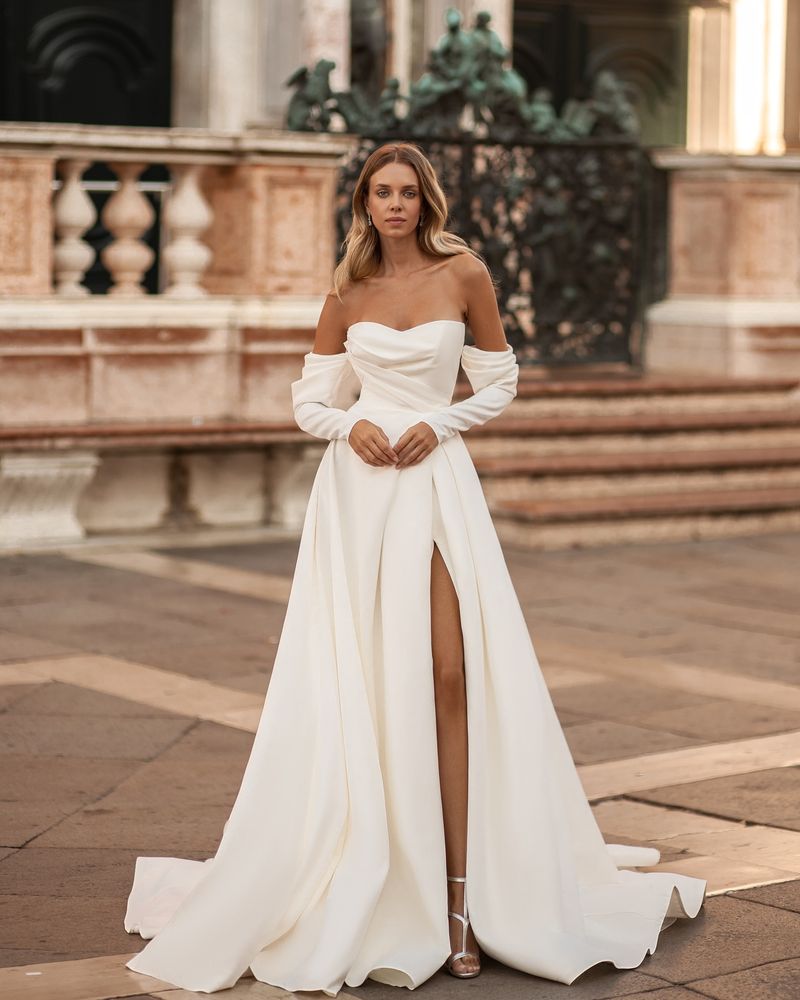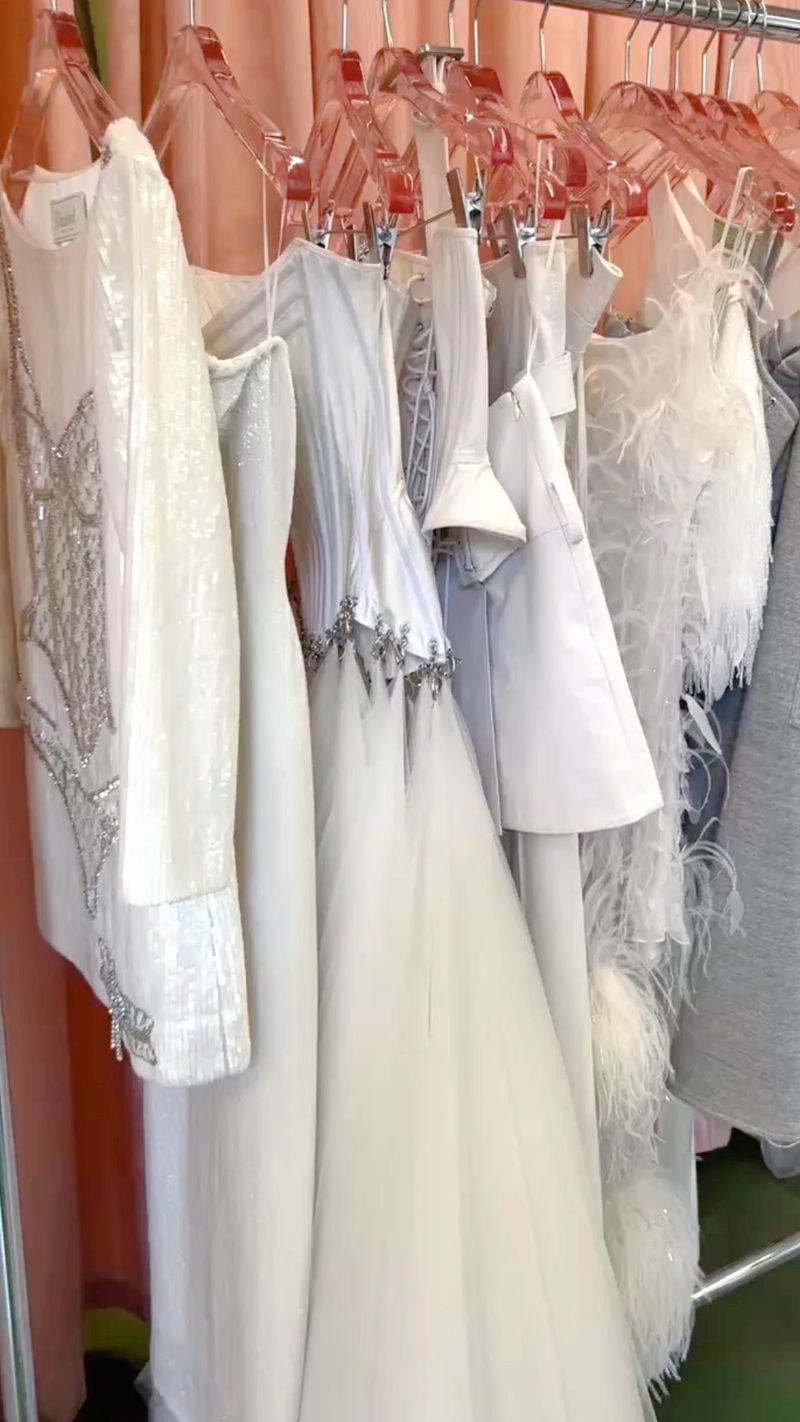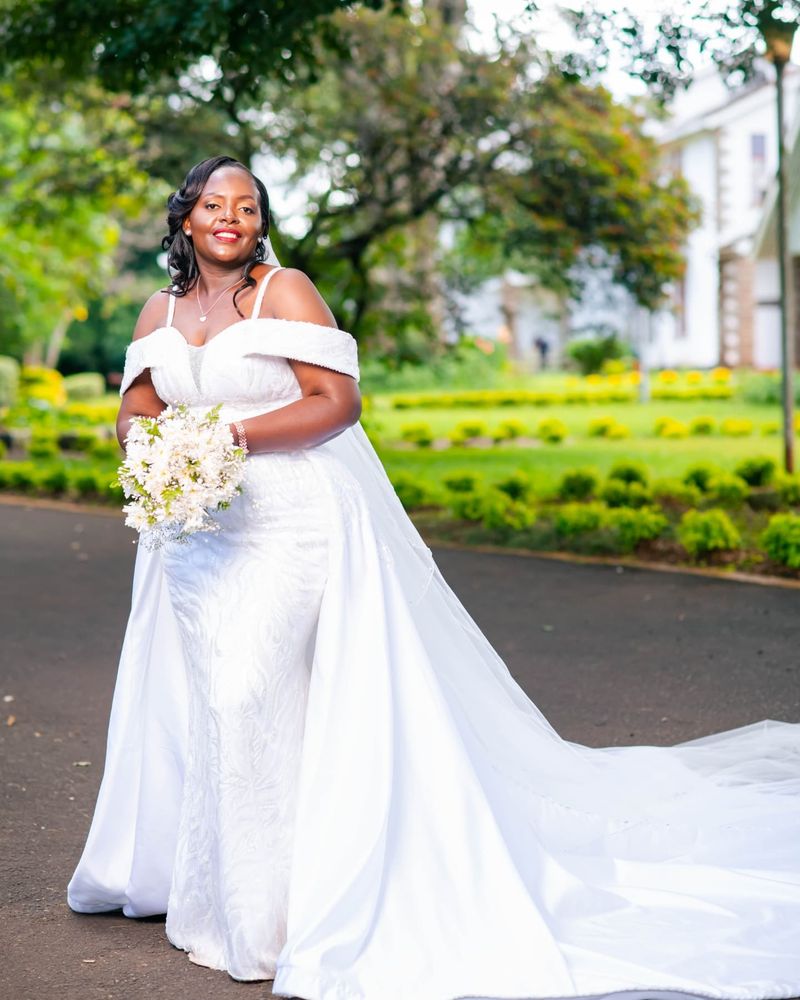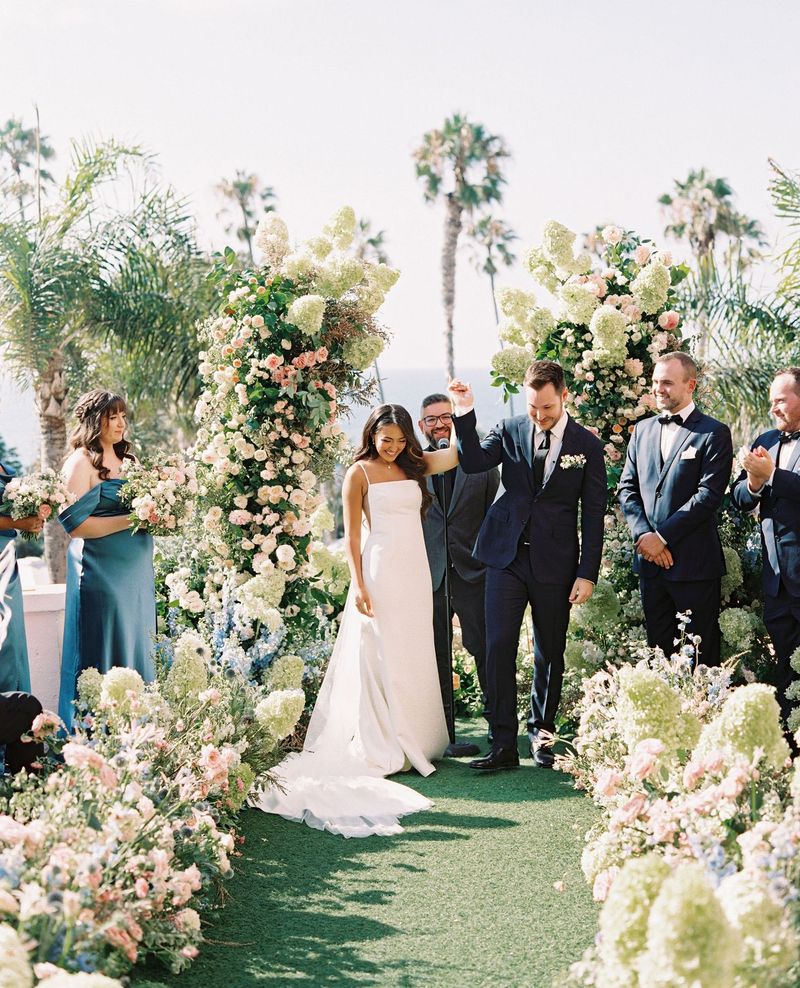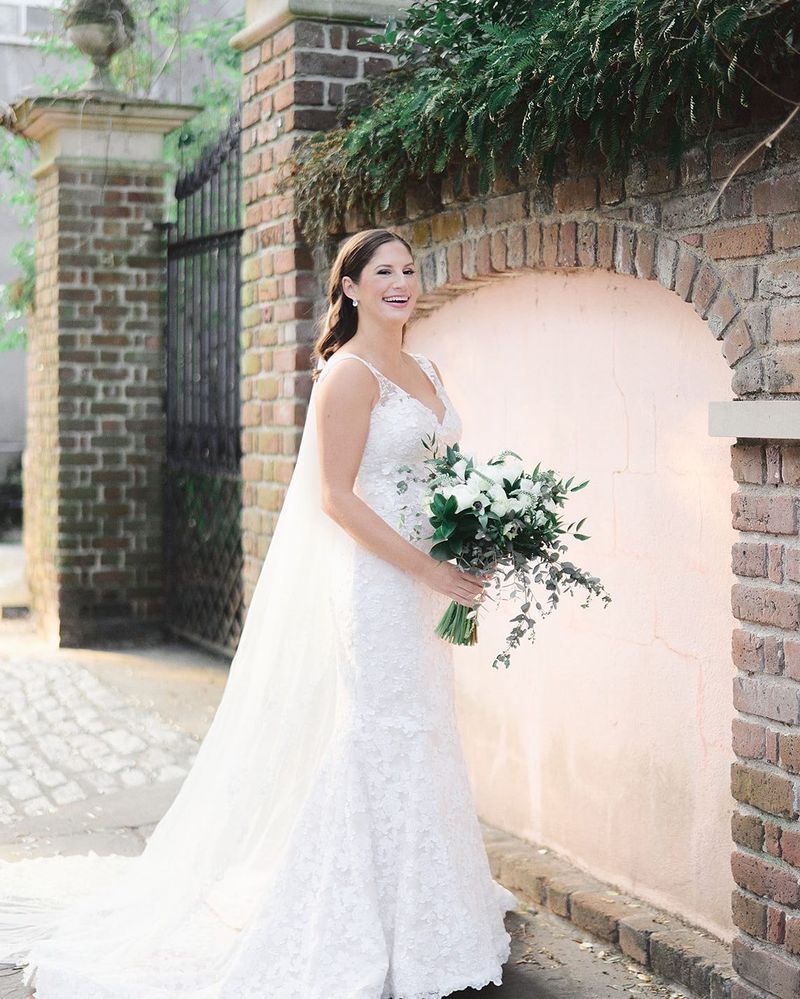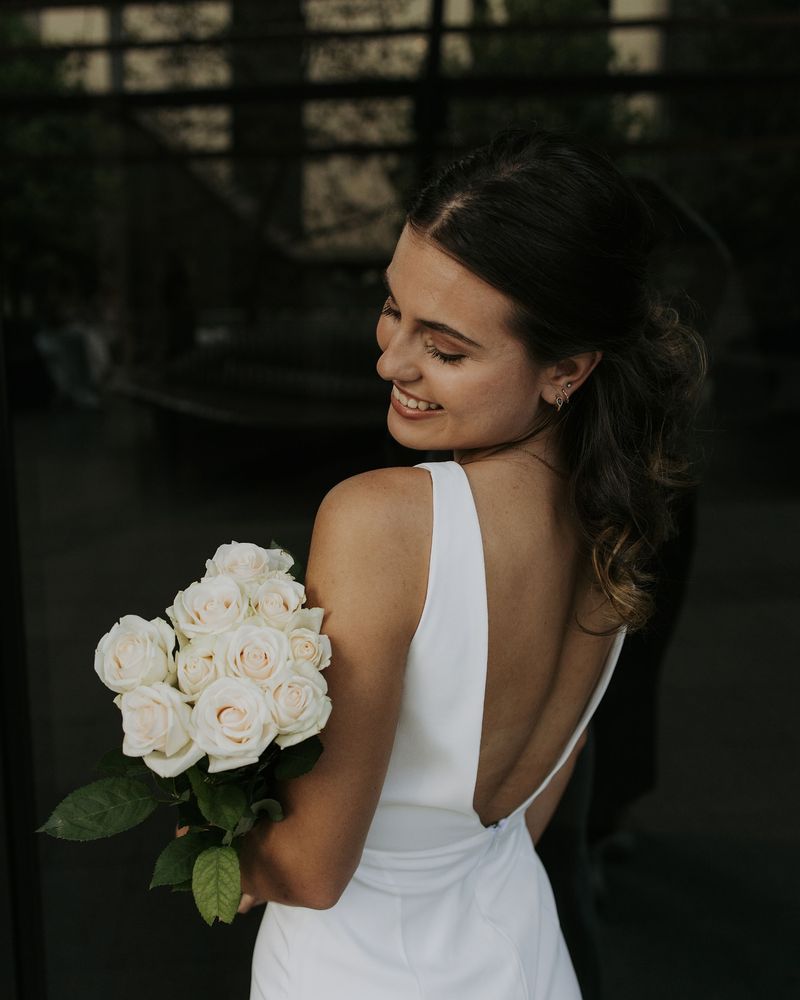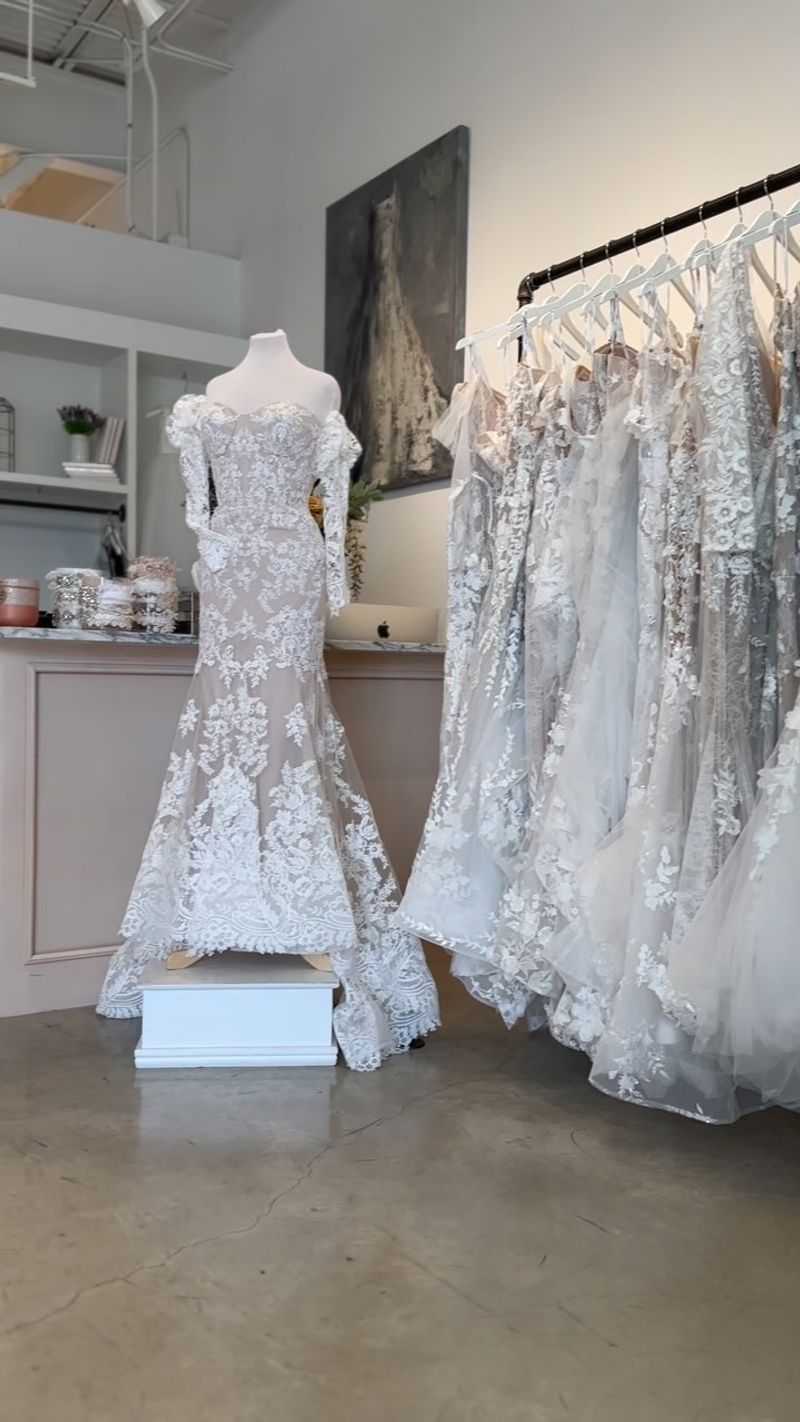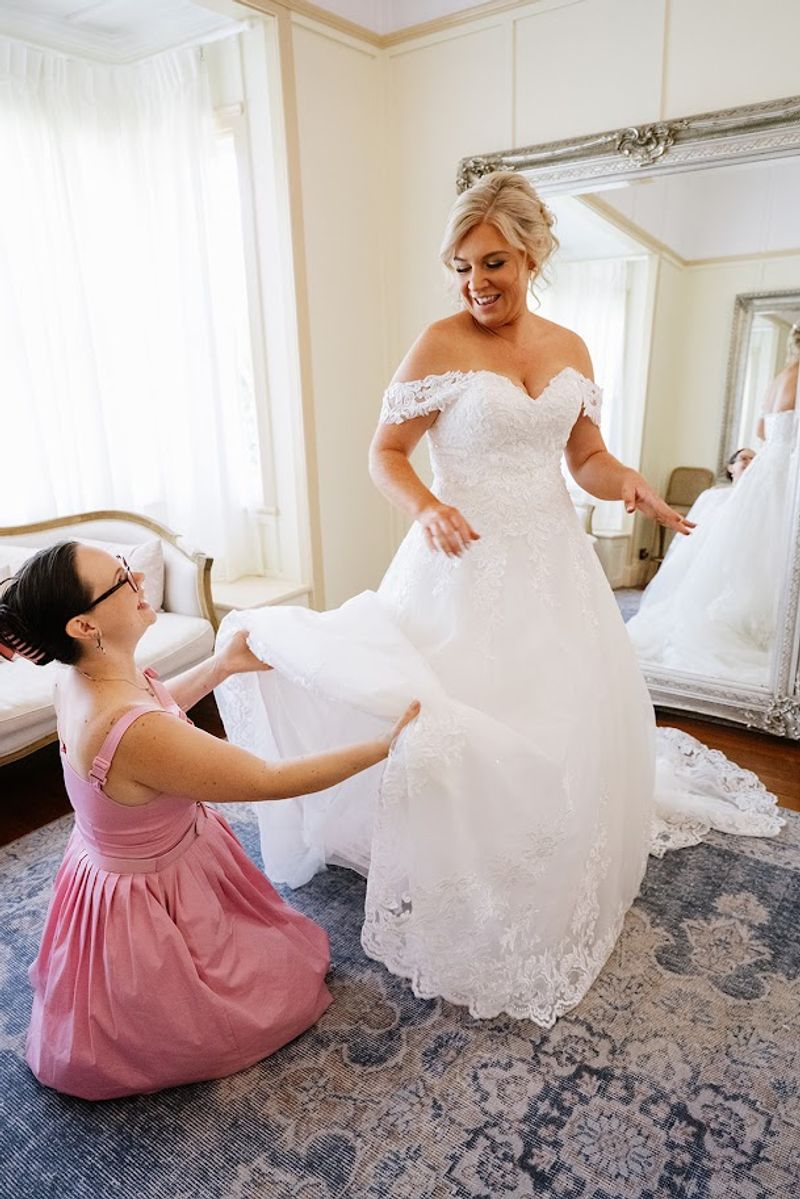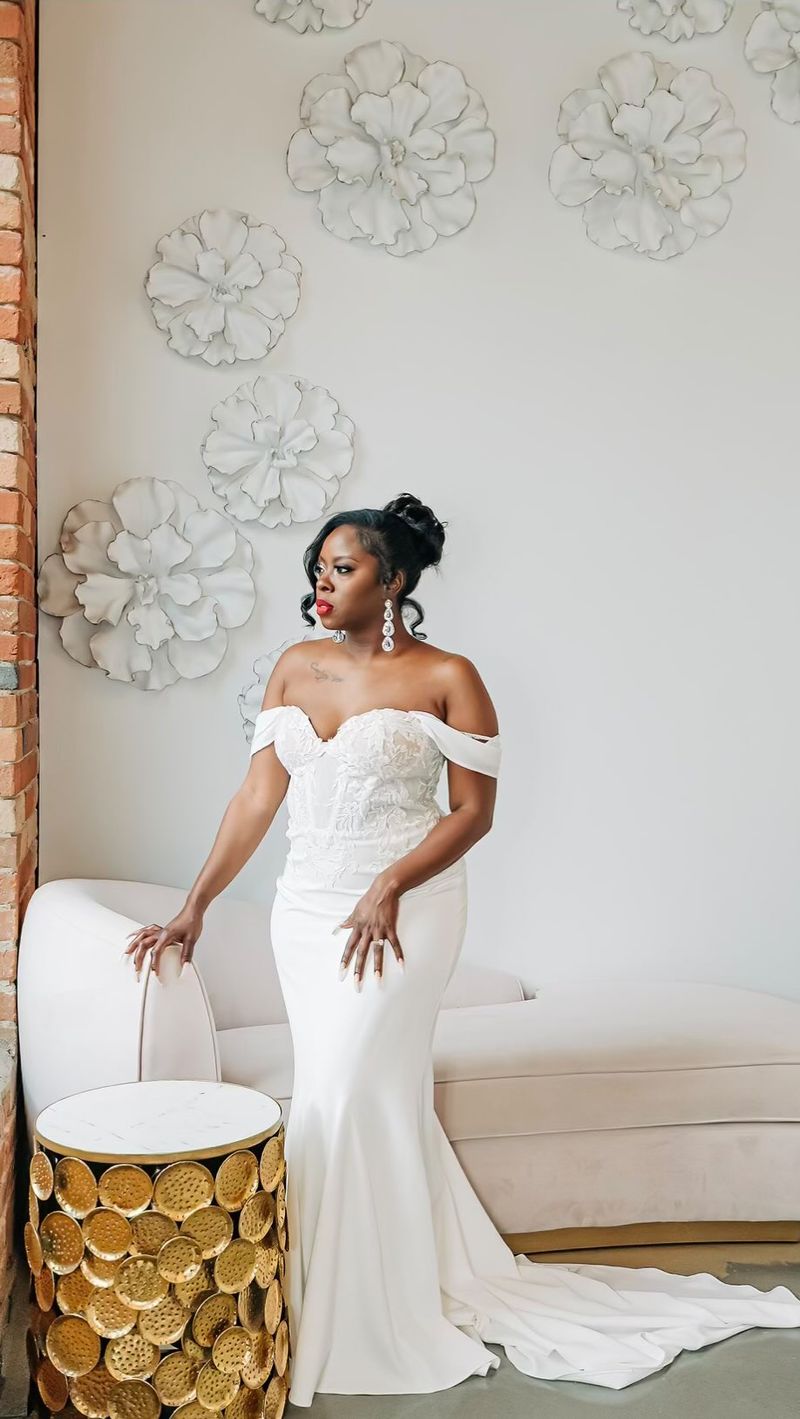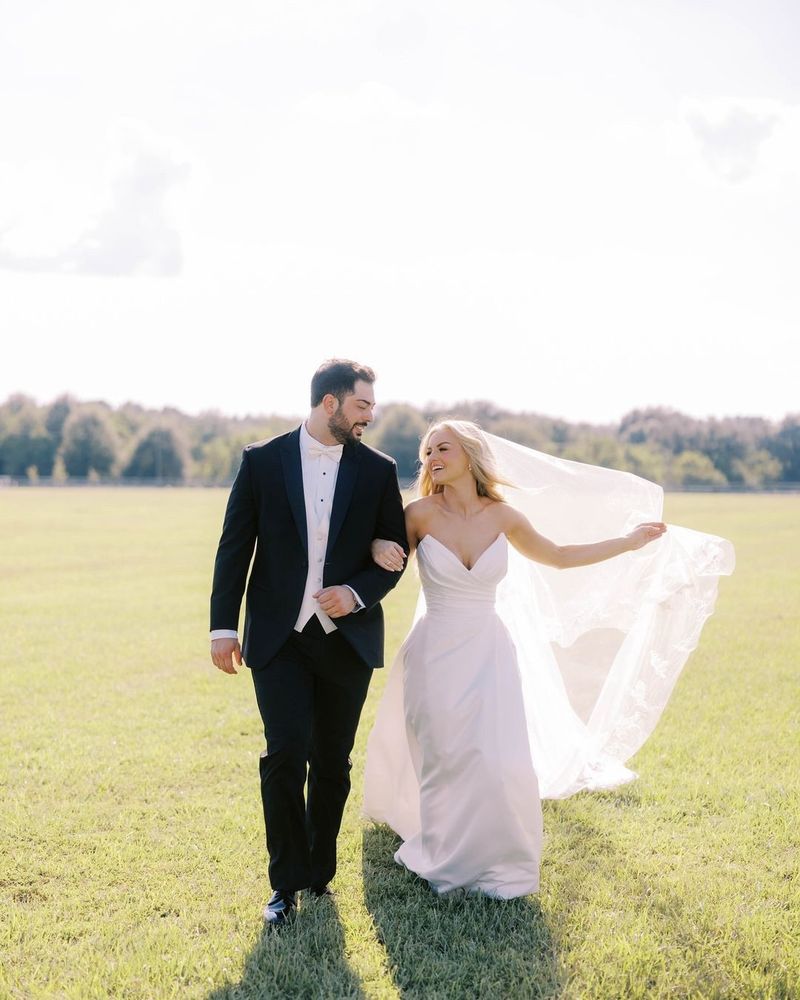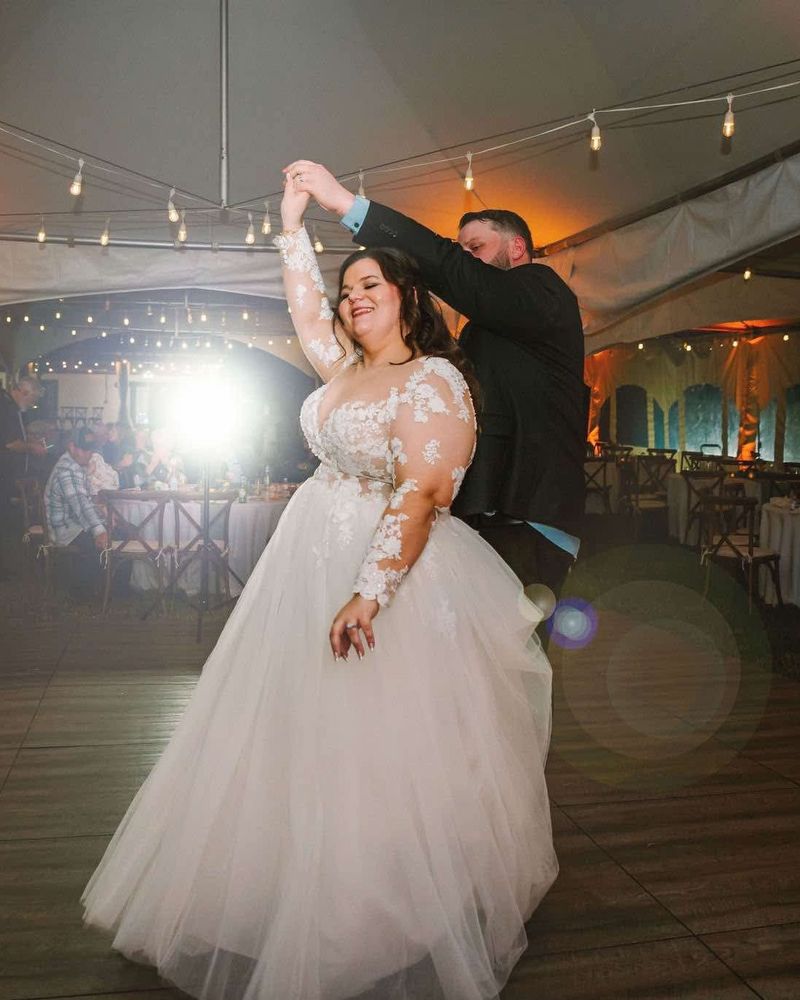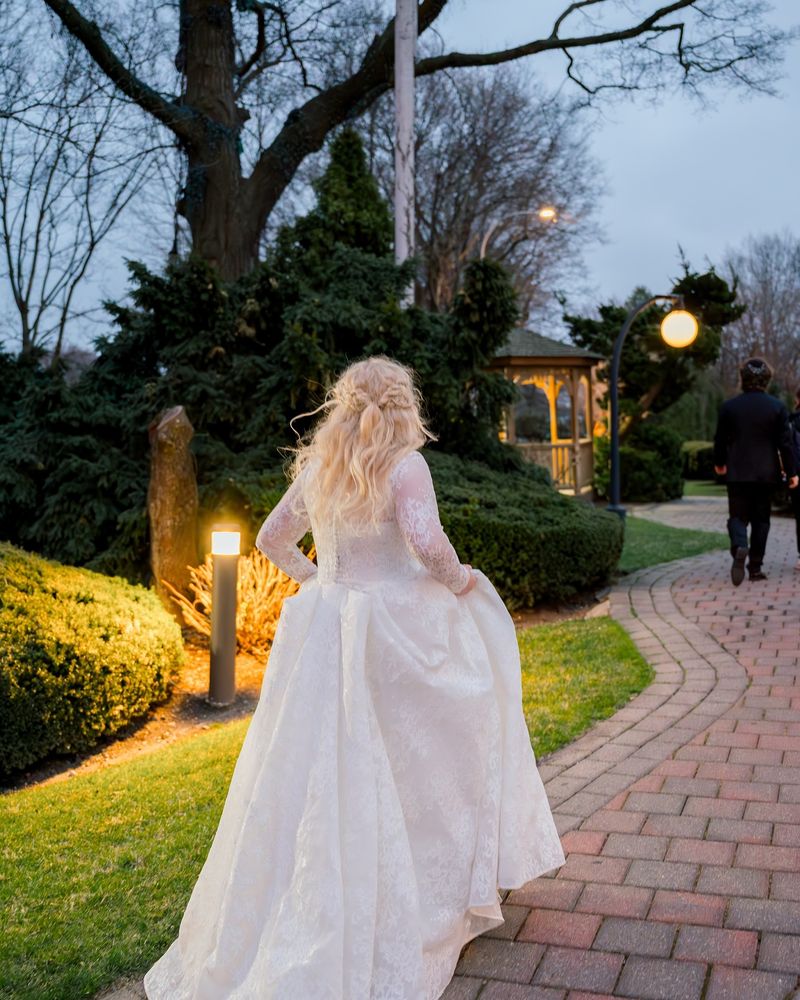16 Tips For Finding The Perfect Wedding Dress For Your Big Day
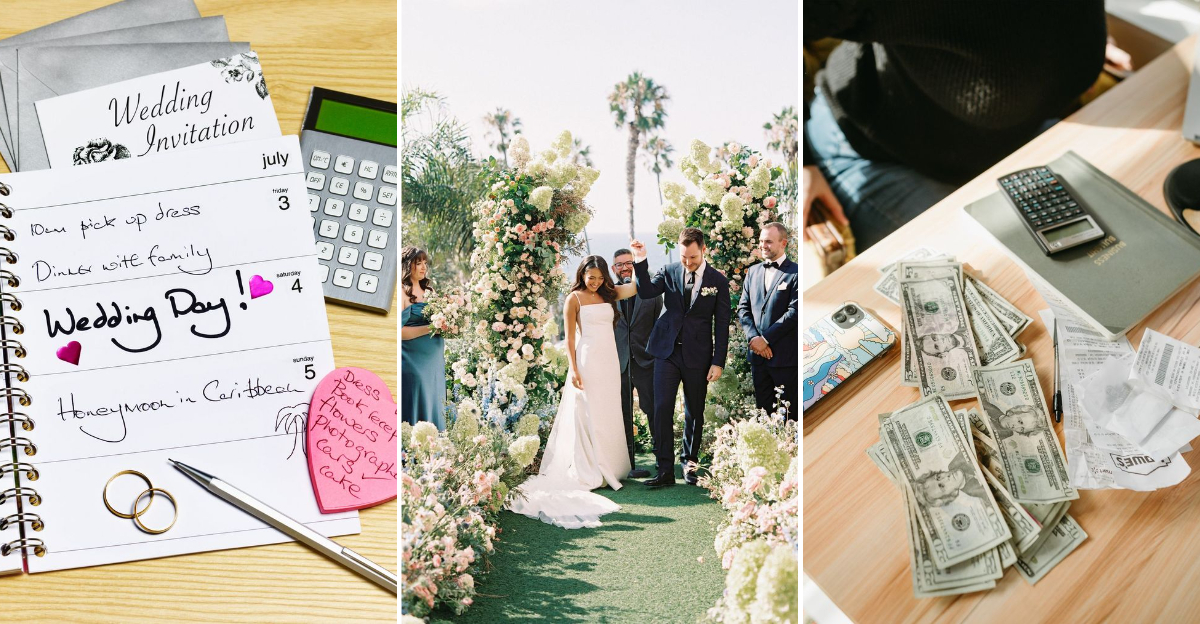
Shopping for a wedding dress might be the most exciting outfit hunt you’ll ever experience! It’s also one of the most personal decisions you’ll make for your wedding day.
I’ve helped countless brides find their dream gowns, and I’ve noticed certain strategies that consistently lead to success.
Here are my top tips to help you discover the dress that makes you feel absolutely incredible on your special day.
1. Start Your Search Early
Wedding dresses typically take 6-8 months to arrive after ordering. Add another 2-3 months for alterations, and you’re looking at nearly a year of planning!
I started my search 14 months before my wedding and was so grateful for that cushion. When my first-choice dress arrived with fabric issues, I had plenty of time to find an even better replacement without stress.
Some boutiques offer rush orders, but they’ll cost you extra. Plus, shopping without time pressure means you can wait for sample sales or designer trunk shows where you might score your dream dress at a discount.
2. Set a Realistic Budget
Money talk isn’t fun, but it’s necessary. The average wedding dress costs about $1,800, but prices range from $500 to $15,000+. Remember to factor in alterations ($500-$700), accessories, shoes, and undergarments.
My sister made a classic mistake by trying on dresses way above her budget. She fell in love with a $5,000 gown when her limit was $2,000. Nothing else compared afterward, and she spent months unhappy until finding a similar style within reach.
Be upfront with consultants about your budget. They can steer you toward appropriate options and even suggest upcoming sales for designers you love.
3. Know Your Body Shape
Understanding your body’s natural lines helps narrow down flattering silhouettes. A-lines work for most bodies, ball gowns create drama, mermaids showcase curves, and sheaths complement petite frames.
My cousin always hated her shoulders but loved her waistline. Her consultant suggested illusion necklines that softened her shoulders while her fitted waist became the focal point. She found confidence in a silhouette she’d never considered!
Don’t get hung up on “rules” though. I’ve seen pear-shaped brides rock form-fitting styles and petite women shine in voluminous ball gowns. The right dress makes you feel beautiful, regardless of traditional shape recommendations.
4. Research Styles Before Shopping
Going in blind to appointments wastes precious shopping time. Create a Pinterest board or save Instagram posts of styles that catch your eye. You’ll start noticing patterns in what you’re drawn to – maybe lace details, specific necklines, or certain silhouettes.
My best friend thought she wanted a princess ball gown until she realized every dress she saved was actually a fit-and-flare. Her consultant immediately spotted this trend in her inspiration photos.
Familiarize yourself with basic terminology too. Knowing the difference between ivory and champagne or what “chapel train” means helps communicate your vision. Bring 3-5 favorite inspiration photos to appointments as starting points.
5. Keep an Open Mind
The dress you never imagined might be “the one.” I’ve watched countless brides reject styles on hangers only to fall in love once they try them on. Wedding dresses look completely different on bodies than on racks!
My own dress shopping surprised me entirely. After pinning sleek, minimalist gowns for months, I reluctantly tried on a detailed lace dress my consultant suggested. The moment I saw myself, I knew it was perfect – nothing like what I’d planned.
Try at least one wildcard option at each appointment. Let consultants bring styles they think might work – it’s literally their job to know what looks good. You can always say no, but you might discover something magical.
6. Choose Your Shopping Companions Wisely
Too many opinions can overwhelm your own voice. Limit your entourage to 2-3 supportive people who understand your style and budget. They should want to help you find YOUR dream dress, not theirs.
My college roommate brought seven people to her appointment. The salon became chaotic with conflicting opinions, and she left in tears without a dress. Her second appointment with just her mom and sister was productive and joyful.
Consider bringing someone who’s seen you through different fashion phases or who knows what makes you feel confident. Skip including anyone who tends to be overly critical or makes everything about themselves. This experience should center your happiness.
7. Prioritize Comfort
You’ll wear this dress for 8+ hours of hugging, dancing, sitting, and celebrating. Comfort matters! Can you raise your arms? Sit down? Breathe deeply? Use the bathroom independently?
My colleague chose a stunning but rigid mermaid gown. By reception time, she was miserable and couldn’t dance properly. Meanwhile, my other friend opted for a dress with a removable overskirt – formal for ceremony, comfortable for dancing.
Heavy beading might look amazing but can weigh you down and cause shoulder pain. Stiff fabrics might restrict movement. Super delicate materials might make you anxious about damage. Consider your venue too – a cathedral train might be impractical for a beach wedding.
8. Consider Your Venue
Your venue should influence your dress choice. A ballroom wedding might call for formal elegance, while a beach ceremony demands lighter fabrics that won’t trap sand or blow awkwardly in wind.
My friend chose a heavy satin ball gown for her July vineyard wedding. The 95-degree heat made her miserable when outdoor photos ran long. Another bride chose a sleek crepe dress for her mountain wedding and needed to add a stylish wrap when evening temperatures dropped.
Garden weddings might warrant shorter trains that won’t collect grass stains. Historic venues with narrow staircases might make super-wide skirts impractical. Religious ceremonies might require shoulder coverage. Let your venue guide certain practical aspects of your dress decision.
9. Think About the Season
Season affects comfort and style. Heavy satin or long sleeves might be perfect for winter but stifling in summer. Lightweight chiffon keeps you cool in July but might leave you shivering in December.
Seasonal colors matter too. Winter whites look stunning against snowy backdrops, while warmer ivories complement fall foliage. My friend chose a champagne underlay with ivory lace for her autumn wedding – it photographed beautifully against colorful leaves.
Some fabrics wrinkle or wilt in humidity, while others trap heat. Ask your consultant which materials work best for your wedding date. And remember, indoor venues with climate control give you more flexibility than outdoor settings where weather will directly impact your comfort.
10. Trust Your Gut Feeling
That magical “this is it” moment? It’s real for many brides. Your body language often reveals your true feelings – leaning forward, smiling unconsciously, not wanting to take the dress off.
My best friend tried on a technically perfect dress that checked all her boxes but didn’t spark joy. The dress she ultimately chose made her tear up instantly. She just knew.
Not everyone experiences a dramatic emotional reaction though. Sometimes it’s just quiet certainty or feeling like your best self. One clear sign: if you keep comparing other dresses to a specific one, that comparison dress might be your winner. Listen to your instincts even when they surprise you.
11. Limit How Many Dresses You Try
Decision fatigue is real! After about 7-10 dresses, they start blurring together. I’ve watched brides try on 20+ gowns in one day, unable to remember details of dresses they loved hours earlier.
My approach with friends is quality over quantity. Start with diverse styles to identify what elements you love, then narrow down to variations of your favorite silhouette. Take photos (if the salon allows) of top contenders with your face showing to capture your genuine reaction.
Schedule no more than two appointments in one day. Shopping is emotionally and physically draining! When you find a strong contender, consider stopping there and returning another day to try it again with fresh eyes before making your final decision.
12. Factor in Alteration Possibilities
Almost every wedding dress needs alterations. Good tailoring can transform a dress from pretty to perfect! Standard alterations include hemming, taking in the bodice, and adding bustle points for the train.
My sister fell in love with a sample dress one size too large. The consultant showed how strategic tailoring would create her dream fit. Meanwhile, my friend wanted to add sleeves to a strapless gown – totally possible!
Ask what modifications are feasible before committing. Some changes (like adding beading or completely changing necklines) are expensive or impossible. Don’t buy a dress hoping for major structural changes. However, minor tweaks like adding straps, modest panels, or a belt can personalize your look beautifully.
13. Bring Proper Undergarments
The right foundation garments make a huge difference in how dresses fit! Bring nude, seamless underwear and whatever bra style you might want for your wedding day. For strapless or backless styles, try adhesive cups or shapewear.
My friend brought only black underwear to her appointment. Every light-colored dress showed dark shadows in photos, making it hard to envision the final look. Another brought proper shapewear and immediately saw how it smoothed lines under fitted styles.
Bring shoes with a similar height to what you’ll wear on your wedding day too. This affects not just the hem length but how your posture looks in the dress. Many salons have loaner shoes, but your own give a more accurate picture.
14. Stay True to Your Personal Style
Your wedding dress should feel like the best version of you, not a costume. If you never wear strapless tops in daily life, you might feel uncomfortable in a strapless gown all day, regardless of trends.
My minimalist friend felt pressured toward elaborate designs because “it’s your wedding day!” She was miserable until finding a sleek, architectural dress that reflected her everyday aesthetic. She looked stunning because she felt authentic.
Think about outfits that consistently make you feel confident. What necklines do you gravitate toward? What colors complement your complexion? Your wedding look should be elevated but still connected to your personal style – you should recognize yourself in the mirror!
15. Consider Movement and Dancing
Your dress needs to work for all wedding activities! Try sitting, walking, and yes – dancing in potential dresses. Some gorgeous designs restrict movement in ways you’ll regret on your celebration day.
My cousin’s trumpet dress looked incredible in standing photos but created an awkward silhouette when seated at dinner. My other friend chose a dress with a removable overskirt – formal for ceremony, party-ready for reception.
Heavy beading can weigh down your movement and even cause shoulder pain after hours. Fitted bodices might restrict deep breathing or eating comfortably. Some fabrics don’t move gracefully for dancing. Do a “dance test” in the fitting room by swaying or twirling to see how the dress moves with you.
16. Take Photos From All Angles
Mirrors don’t tell the whole story! Ask someone to take photos (if the salon allows) from front, sides, and back. You’ll be photographed from all angles on your wedding day, so your dress should look good from every view.
My friend was shocked to discover her dream dress had an unflattering back view that didn’t show in the salon’s limited mirrors. Photos revealed the issue before purchase. Another realized through photos that a dress she initially dismissed actually photographed beautifully.
Make sure photos capture you in natural movement too, not just posed stillness. Walk, turn, and sit while someone snaps pictures. This reveals how the dress behaves in action. Check these photos in different lighting as well – salon spotlights can look very different from natural daylight.

